Trivia Browser

▲
1
▼
An updated version of the game was released in 1999 that made numerous changes to the original version. This is perhaps most notable in the story, which while still sharing the same premise and plot outline, removed or changed various plot points:
• The original version had a subplot where LapTrap received what the game referred to as "wisdom of the village elders", in which he experienced visions of the villagers' pasts, providing possible motives for why they would want to steal the treasure. This was also how the ClueFinders obtained their clues, which appeared as beams of blue light that zapped LapTrap and gave him the info. The entire subplot was removed in the revision, with the original cutscenes being replaced with new ones featuring the ClueFinders discussing theories about the disappearances instead. Likewise, clues were obtained in a more typical fashion of talking to NPCs and having them share information with you.
• The fate of the true culprit behind the thefts, Spoiler:the apprentice, is different in both versions following his burial under an avalanche. In the original version, he escapes from the snow only to be dragged back under by the real Yeti. In the revision, however, this was changed to him simply climbing out and declaring that the ClueFinders can't stop him.
In addition, the series' art style was updated in 1999, leading to the graphics, and character sprites and content from the animated cutscenes being updated in the revision to better match it. Several music tracks were also added to areas that were silent in the original version.
• The original version had a subplot where LapTrap received what the game referred to as "wisdom of the village elders", in which he experienced visions of the villagers' pasts, providing possible motives for why they would want to steal the treasure. This was also how the ClueFinders obtained their clues, which appeared as beams of blue light that zapped LapTrap and gave him the info. The entire subplot was removed in the revision, with the original cutscenes being replaced with new ones featuring the ClueFinders discussing theories about the disappearances instead. Likewise, clues were obtained in a more typical fashion of talking to NPCs and having them share information with you.
• The fate of the true culprit behind the thefts, Spoiler:the apprentice, is different in both versions following his burial under an avalanche. In the original version, he escapes from the snow only to be dragged back under by the real Yeti. In the revision, however, this was changed to him simply climbing out and declaring that the ClueFinders can't stop him.
In addition, the series' art style was updated in 1999, leading to the graphics, and character sprites and content from the animated cutscenes being updated in the revision to better match it. Several music tracks were also added to areas that were silent in the original version.
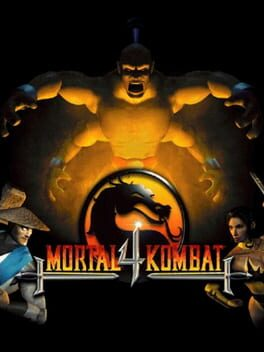
▲
1
▼
 The initial release of the arcade version features unused character biographies for the game's playable cast. These biographies are facetious in nature, for instance claiming that Shinnok was an ex-model for the Bicycle brand of playing cards and that Scorpion's mission in life is to scold a friend for punching him when he was a child. The joking nature of these biographies likely contributed to their disabling in the original build and outright removal from the game's code in subsequent updates. Examining the biographies through hacking the game shows that two of them are unfinished. Fujin is referred to as "Windgod" and Noob Saibot's biography is mostly recycled from Raiden's, with the only original portion being the cut-off opening line.
The initial release of the arcade version features unused character biographies for the game's playable cast. These biographies are facetious in nature, for instance claiming that Shinnok was an ex-model for the Bicycle brand of playing cards and that Scorpion's mission in life is to scold a friend for punching him when he was a child. The joking nature of these biographies likely contributed to their disabling in the original build and outright removal from the game's code in subsequent updates. Examining the biographies through hacking the game shows that two of them are unfinished. Fujin is referred to as "Windgod" and Noob Saibot's biography is mostly recycled from Raiden's, with the only original portion being the cut-off opening line.
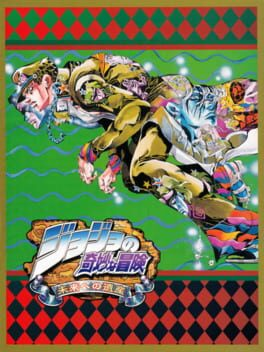
subdirectory_arrow_right JoJo's Venture (Game)
▲
1
▼
 JoJo's Bizarre Adventure: Heritage for the Future was originally released as JoJo's Venture in December 1998. This version suffered from a rushed development, reflected by the abundance of unused assets in its code, including both finished and unfinished sprites for various attacks, cutscenes, and HUD elements. An updated version would come out eight months later, this time using the series' full title and adding the Heritage for the Future subtitle. A significant chunk of the unused assets in JoJo's Venture would be polished up and incorporated in this newer version.
JoJo's Bizarre Adventure: Heritage for the Future was originally released as JoJo's Venture in December 1998. This version suffered from a rushed development, reflected by the abundance of unused assets in its code, including both finished and unfinished sprites for various attacks, cutscenes, and HUD elements. An updated version would come out eight months later, this time using the series' full title and adding the Heritage for the Future subtitle. A significant chunk of the unused assets in JoJo's Venture would be polished up and incorporated in this newer version.
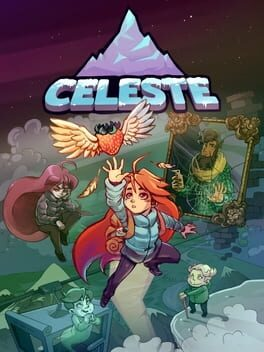
▲
1
▼
 Within the data for version 1.2.6.1 is a placeholder chapter icon for "Farewell" depicting the Moon from The Legend of Zelda: Majora's Mask. The backside is an edited version of this image which scrubs off the moon's facial features. The placeholder icon was removed from the game's files shortly afterward.
Within the data for version 1.2.6.1 is a placeholder chapter icon for "Farewell" depicting the Moon from The Legend of Zelda: Majora's Mask. The backside is an edited version of this image which scrubs off the moon's facial features. The placeholder icon was removed from the game's files shortly afterward.
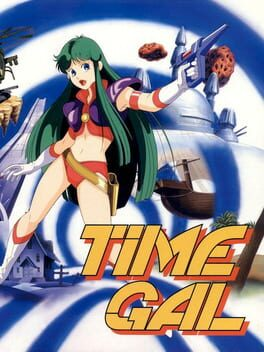
This trivia has been marked as "Not Safe for Work".
It may not be appropriate for all visitors and definitely isn't appropriate for work or school environments.
Click here to unhide it.
It may not be appropriate for all visitors and definitely isn't appropriate for work or school environments.
Click here to unhide it.
▲
1
▼

▲
1
▼
 In World 8, it's possible to bypass almost the entire battleship level by dropping into the water and swimming beneath the ship, jumping back on once the autoscroll reaches the vessel's stern. In the international version of the original NES release, one tile is removed from the rightmost portion of the ship in order to make the final jump easier.
In World 8, it's possible to bypass almost the entire battleship level by dropping into the water and swimming beneath the ship, jumping back on once the autoscroll reaches the vessel's stern. In the international version of the original NES release, one tile is removed from the rightmost portion of the ship in order to make the final jump easier.
YouTube video showcasing the trick:
https://www.youtube.com/watch?v=JiOqmb14baQ
The Cutting Room Floor article:
https://tcrf.net/Super_Mario_Bros._3/Version_Differences#World_8_Battleship_Level
https://www.youtube.com/watch?v=JiOqmb14baQ
The Cutting Room Floor article:
https://tcrf.net/Super_Mario_Bros._3/Version_Differences#World_8_Battleship_Level
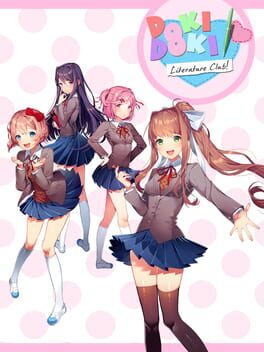
▲
1
▼
 In the original release of the game, attempting to quit during the scene where Spoiler:the player character walks in on the aftermath of Sayori's suicide would open a modified version of the exit prompt. The text in this version of the window is heavily distorted, and a rapidly flashing GIF portrait of Sayori appears in the leftmost region. This Easter egg was removed in the Version 1.1.1 update due to concerns that audiences would interpret this as the game mocking them for feeling distressed at Spoiler:a realistic depiction of suicide; another likely factor for its removal is the risk that the flashing could pose to epileptic or photosensitive players. Despite this, the prompt's assets are still present in the game's files.
In the original release of the game, attempting to quit during the scene where Spoiler:the player character walks in on the aftermath of Sayori's suicide would open a modified version of the exit prompt. The text in this version of the window is heavily distorted, and a rapidly flashing GIF portrait of Sayori appears in the leftmost region. This Easter egg was removed in the Version 1.1.1 update due to concerns that audiences would interpret this as the game mocking them for feeling distressed at Spoiler:a realistic depiction of suicide; another likely factor for its removal is the risk that the flashing could pose to epileptic or photosensitive players. Despite this, the prompt's assets are still present in the game's files.
The Cutting Room Floor articles (Epilepsy warning: first link contains the original GIF used in this Easter egg):
https://tcrf.net/Doki_Doki_Literature_Club!#Version_1.1.1
https://tcrf.net/Doki_Doki_Literature_Club!#Deleted_Easter_Egg
https://tcrf.net/Doki_Doki_Literature_Club!#Version_1.1.1
https://tcrf.net/Doki_Doki_Literature_Club!#Deleted_Easter_Egg
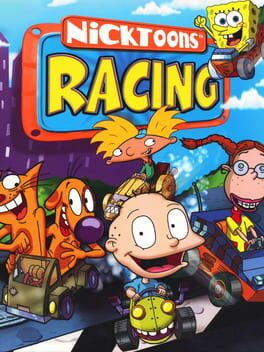
▲
1
▼
The arcade release of Nicktoons Racing is a modified version of the PC release running on a Windows XP computer bolted into the cabinet. Some modifications are made for the arcade setting, such as a selectable time limit, but the biggest changes are the omissions of the game's opening cutscene, Stimpy from The Ren & Stimpy Show as a racer, and the Gritty Kitty item from that series. While the Race Madness track also based on the series remains in the arcade version of the game, Stimpy and the Gritty Kitty item were most likely removed due to it releasing in 2003, the same year as the adult-oriented Ren & Stimpy: Adult Party Cartoon reboot. The opening cutscene appears to have been removed due to it requiring Windows Media Player, but may have also been removed due to difficulty in editing Ren & Stimpy elements out of the opening cutscene. The removed content is still within the files, and simply disabled.
Franchise: The Simpsons
▲
2
▼
In 1990s-era marketing for The Simpsons, Bart was consistently seen wearing light blue shirts in place of the orange shirt seen in the series, a still-unexplained phenomenon that has been referenced within the show itself. This element of marketing was reflected in many of the show's tie-in games, often with inconsistent shirt colors between a single game:
• The Simpsons Arcade Game features Bart in his light blue shirt for a majority of the game. However, in the opening, Bart can be seen wearing a red shirt for a brief moment when he jumps out of the school building.
• Most versions of The Simpsons: Bart vs. The Space Mutants depict Bart wearing a red shirt, a slight difference from orange. The Amiga, Atari ST, and Amstrad versions, however, depict him wearing light blue in gameplay, though the red can still be seen on the title screen, cutscenes, and box art.
• Bart wears a show-faithful orange in all versions of The Simpsons: Bart vs. the World. However, the sliding puzzle minigame in the NES version features an image of Bart with the light blue shirt, based on the famous "Don't have a cow, man!" t-shirt.
• The Simpsons: Bart's Nightmare primarily uses Bart's orange shirt. However, the title card shows Bart with a green shirt, and the Bartman minigame has Bart wear a bluish grey shirt, Bartman being assigned the blue shirt while regular Bart wears red or orange becomes a common theme from this point.
• The Simpsons: Bart Meets Radioactive Man is primarily a blue shirt game. However, in the intro, Bart begins with his orange shirt, which becomes a blue shirt when he dons the Bartman mask.
• Virtual Bart, while typically showing alternate universe Barts, shows Bart with an orange shirt whenever he is in his original outfit. However, the box art shows Bart wearing blue.
• The Simpsons: Night of the Living - Treehouse of Horror primarily features the orange shirt Bart, but he wears a blue shirt briefly in the intro.
• The Simpsons: Hit & Run is entirely an orange shirt game, but Bart can be seen with a dark blue shirt on the box art.
• In The Simpsons: Tapped Out, the most recent Simpsons video game, Bart wears an orange shirt, but Bartman wears a blue shirt.
The Simpsons: Bart's House of Weirdness, The Simpsons: Virtual Springfield, The Simpsons Bowling, The Simpsons Wrestling, and all versions of The Simpsons: Road Rage and The Simpsons Game all feature Bart wearing only orange shirts (even when Bartman appears), while The Simpsons: Cartoon Studio is the only game where Bart only wears blue shirts. Cartoon Studio was the final game to primarily use blue shirt Bart, while The Simpsons: Bart's House of Weirdness was the first game to not have any blue shirt Bart whatsoever. The Simpsons: Bart vs. the Juggernauts and The Simpsons: Escape from Camp Deadly depict blue and red shirt Bart respectively on their box arts, but do not have color, being Game Boy games.
• The Simpsons Arcade Game features Bart in his light blue shirt for a majority of the game. However, in the opening, Bart can be seen wearing a red shirt for a brief moment when he jumps out of the school building.
• Most versions of The Simpsons: Bart vs. The Space Mutants depict Bart wearing a red shirt, a slight difference from orange. The Amiga, Atari ST, and Amstrad versions, however, depict him wearing light blue in gameplay, though the red can still be seen on the title screen, cutscenes, and box art.
• Bart wears a show-faithful orange in all versions of The Simpsons: Bart vs. the World. However, the sliding puzzle minigame in the NES version features an image of Bart with the light blue shirt, based on the famous "Don't have a cow, man!" t-shirt.
• The Simpsons: Bart's Nightmare primarily uses Bart's orange shirt. However, the title card shows Bart with a green shirt, and the Bartman minigame has Bart wear a bluish grey shirt, Bartman being assigned the blue shirt while regular Bart wears red or orange becomes a common theme from this point.
• The Simpsons: Bart Meets Radioactive Man is primarily a blue shirt game. However, in the intro, Bart begins with his orange shirt, which becomes a blue shirt when he dons the Bartman mask.
• Virtual Bart, while typically showing alternate universe Barts, shows Bart with an orange shirt whenever he is in his original outfit. However, the box art shows Bart wearing blue.
• The Simpsons: Night of the Living - Treehouse of Horror primarily features the orange shirt Bart, but he wears a blue shirt briefly in the intro.
• The Simpsons: Hit & Run is entirely an orange shirt game, but Bart can be seen with a dark blue shirt on the box art.
• In The Simpsons: Tapped Out, the most recent Simpsons video game, Bart wears an orange shirt, but Bartman wears a blue shirt.
The Simpsons: Bart's House of Weirdness, The Simpsons: Virtual Springfield, The Simpsons Bowling, The Simpsons Wrestling, and all versions of The Simpsons: Road Rage and The Simpsons Game all feature Bart wearing only orange shirts (even when Bartman appears), while The Simpsons: Cartoon Studio is the only game where Bart only wears blue shirts. Cartoon Studio was the final game to primarily use blue shirt Bart, while The Simpsons: Bart's House of Weirdness was the first game to not have any blue shirt Bart whatsoever. The Simpsons: Bart vs. the Juggernauts and The Simpsons: Escape from Camp Deadly depict blue and red shirt Bart respectively on their box arts, but do not have color, being Game Boy games.
The Simpsons Arcade intro:
https://www.youtube.com/watch?v=1tCZiHLFk5A
Bart vs. The Space Mutants Amiga longplay:
https://www.youtube.com/watch?v=2StoU8xo2cg
Bart vs. The Space Mutants Atari ST:
https://www.youtube.com/watch?v=zUAxZ_2pp78
Bart vs. The Space Mutants Amstrad CPC longplay:
https://www.youtube.com/watch?v=Vg66PEX1RRI
Hit & Run box art:
https://www.mobygames.com/game/10421/the-simpsons-hit-run/cover/group-191694/cover-517763/
Bart vs. the World NES sliding puzzle:
https://www.youtube.com/watch?v=FWN-37Teja0#t=1848
Grey Shirt Bartman in Nightmare:
https://www.youtube.com/watch?v=cZyCyQI77kw#t=475
Shirt swap in Bart Meets Radioactive Man:
https://www.youtube.com/watch?v=VpJS5Lej8FI#t=62
Virtual Bart gameplay:
https://www.youtube.com/watch?v=joAK1pY0qxk
Night of the Living - Treehouse of Horror gameplay:
https://www.youtube.com/watch?v=fYfmKXL3jsw
Bartman in Tapped Out:
https://tstoaddicts.com/2015/03/04/should-i-spend-donuts-on-bartman/
Bartman's model from Hit & Run:
https://www.models-resource.com/pc_computer/simpsonshitrun/model/12480/
Bartman gameplay in The Simpsons Game:
https://www.youtube.com/watch?v=NeioSaKsP1k#t=t=131
https://www.youtube.com/watch?v=1tCZiHLFk5A
Bart vs. The Space Mutants Amiga longplay:
https://www.youtube.com/watch?v=2StoU8xo2cg
Bart vs. The Space Mutants Atari ST:
https://www.youtube.com/watch?v=zUAxZ_2pp78
Bart vs. The Space Mutants Amstrad CPC longplay:
https://www.youtube.com/watch?v=Vg66PEX1RRI
Hit & Run box art:
https://www.mobygames.com/game/10421/the-simpsons-hit-run/cover/group-191694/cover-517763/
Bart vs. the World NES sliding puzzle:
https://www.youtube.com/watch?v=FWN-37Teja0#t=1848
Grey Shirt Bartman in Nightmare:
https://www.youtube.com/watch?v=cZyCyQI77kw#t=475
Shirt swap in Bart Meets Radioactive Man:
https://www.youtube.com/watch?v=VpJS5Lej8FI#t=62
Virtual Bart gameplay:
https://www.youtube.com/watch?v=joAK1pY0qxk
Night of the Living - Treehouse of Horror gameplay:
https://www.youtube.com/watch?v=fYfmKXL3jsw
Bartman in Tapped Out:
https://tstoaddicts.com/2015/03/04/should-i-spend-donuts-on-bartman/
Bartman's model from Hit & Run:
https://www.models-resource.com/pc_computer/simpsonshitrun/model/12480/
Bartman gameplay in The Simpsons Game:
https://www.youtube.com/watch?v=NeioSaKsP1k#t=t=131
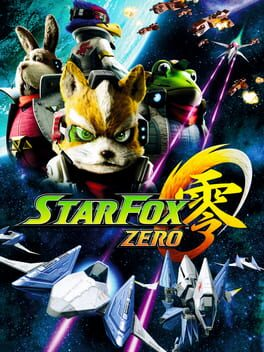
subdirectory_arrow_right Star Fox 2 (Game)
▲
1
▼
By scanning a Fox or Falco amiibo in Star Fox Zero, the Arwings and Walkers will be swapped out with 16-bit era models as seen in Star Fox and Star Fox 2. The old Arwing model's Charge shot does not lock on to targets, which reflects how they did not have a lock-on feature in Star Fox, but only in Star Fox 2 did they have a Charge shot. At the time of Star Fox Zero's release in 2016, Star Fox 2 remained unreleased, with only leaked beta builds being available, including one that allowed you to lock on to enemies with the Charge shot. The game would eventually be completed by Nintendo and released in 2017, but with this lock-on feature removed. Since Nintendo only showed Star Fox 2 to developers actively working on the series, it's believed that PlatinumGames noticed this feature's removal and referenced it in Star Fox Zero over a year before the game's release by making the old Arwings behave accurately to a version of Star Fox 2 that players did not know about.

subdirectory_arrow_right Final Fantasy I & II: Dawn of Souls (Game)
▲
1
▼
Cid, a recurring character in the series who is usually a mechanic with some relation to airships, first appeared in Final Fantasy II and did not appear in the first Final Fantasy game. For the Final Fantasy I & II: Dawn of Souls re-release however, the original game's plot was retroactively changed to make "Cid of the Lufaine" the ancient creator of the airship that the protagonists used.
Final Fantasy I & II: Dawn of Souls - Cid backstory in Lufenia:
https://www.youtube.com/watch?v=IuJzaYSa4AU#t=147
Cid in the first two Final Fantasy games blog post:
http://home.eyesonff.com/content.php/2631-The-Iterations-of-Cid-Part-1
https://www.youtube.com/watch?v=IuJzaYSa4AU#t=147
Cid in the first two Final Fantasy games blog post:
http://home.eyesonff.com/content.php/2631-The-Iterations-of-Cid-Part-1
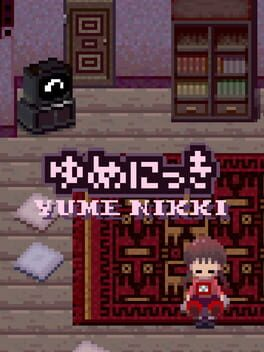
▲
1
▼
 In Version 0.04, Dense Woods A contained two jellyfish instead of just one, with the second being located by a lamppost near the center of the map; interacting with it only causes it to ring, without any additional results. In all recovered later builds, this jellyfish is moved out of bounds, well out of the camera's view; however, it can still be interacted with if the player uses cheats or glitches to access it. In Version 0.10, interacting with this jellyfish crashes the game due to its associated files being renamed: the jellyfish is programmed to call a file called イベント5, which was renamed to イベント_005 in Version 0.10.
In Version 0.04, Dense Woods A contained two jellyfish instead of just one, with the second being located by a lamppost near the center of the map; interacting with it only causes it to ring, without any additional results. In all recovered later builds, this jellyfish is moved out of bounds, well out of the camera's view; however, it can still be interacted with if the player uses cheats or glitches to access it. In Version 0.10, interacting with this jellyfish crashes the game due to its associated files being renamed: the jellyfish is programmed to call a file called イベント5, which was renamed to イベント_005 in Version 0.10.Additionally, Dense Woods A's layout was redesigned in Version 0.07 to remove a gate that originally led to Mural World. Instead, the upper path is expanded to loop over to the western portion of the main road in Dense Woods A, and the remaining gate leading to Puddle World was redesigned.
The Cutting Room Floor article:
https://tcrf.net/Proto:Yume_Nikki/Map_and_Event_Differences/Minor_Maps#Dense_Woods_A
YouTube video showing the use of a noclip glitch to access the offscreen jellyfish in Version 0.10:
https://www.youtube.com/watch?v=z9gNNPmZxd8
https://tcrf.net/Proto:Yume_Nikki/Map_and_Event_Differences/Minor_Maps#Dense_Woods_A
YouTube video showing the use of a noclip glitch to access the offscreen jellyfish in Version 0.10:
https://www.youtube.com/watch?v=z9gNNPmZxd8
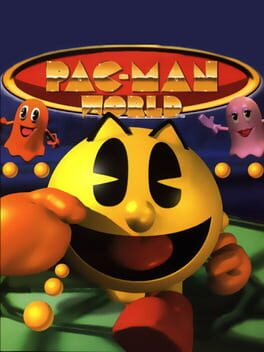
subdirectory_arrow_right Pac-Man World Re-Pac (Game)
▲
1
▼
Pac-Man World's ending has been noted for containing darker humor compared to the game's otherwise lighthearted tone. The game's antagonist Toc-Man, the robot impostor who kidnapped Pac-Man's family, is revealed to be Orson, a tearful grey ghost who just wanted to be as famous as Pac-Man, who responds to this by pretending to show sympathy before eating him. According to the game's designer, Scott Rogers, his reasoning for this tonal shift was:
Rogers also noted that they wanted to have Pac-Man respond to Orson's cry of "nobody loves a ghost!" with "I do!" (in the sense of loving to eat a ghost), but this was scrapped alongside Pac-Man's voice as a whole.
Pac-Man World: Re-Pac amends this divisive ending by designating it as a bad ending and adding a new good ending. If the player fails to rescue Pac-Man's family, the ending plays out as it did in the original game, with an added scene where Orson's ghost minions choose to rescue Pac-Man's family themselves, but if the player successfully rescues Pac-Man's family, he opts to forgive Orson.
"If someone terrorized, kidnapped, and imprisoned your friends and family, you'd probably want to eat them too."
Rogers also noted that they wanted to have Pac-Man respond to Orson's cry of "nobody loves a ghost!" with "I do!" (in the sense of loving to eat a ghost), but this was scrapped alongside Pac-Man's voice as a whole.
Pac-Man World: Re-Pac amends this divisive ending by designating it as a bad ending and adding a new good ending. If the player fails to rescue Pac-Man's family, the ending plays out as it did in the original game, with an added scene where Orson's ghost minions choose to rescue Pac-Man's family themselves, but if the player successfully rescues Pac-Man's family, he opts to forgive Orson.
Twitter thread interview with Scott Rogers:
https://twitter.com/DailyPacMan/status/1548088755763888129
Pac-Man World cutscenes:
https://www.youtube.com/watch?v=1I8bA-6QNh4
Both Pac-Man World Re-Pac endings:
https://www.youtube.com/watch?v=adPHuphqr7o#t=389
https://twitter.com/DailyPacMan/status/1548088755763888129
Pac-Man World cutscenes:
https://www.youtube.com/watch?v=1I8bA-6QNh4
Both Pac-Man World Re-Pac endings:
https://www.youtube.com/watch?v=adPHuphqr7o#t=389
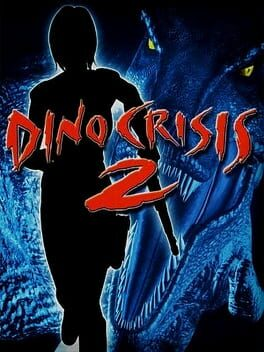
▲
1
▼
Capcom offered a demo CD based upon a beta build of the game as a pre-release promo. The entire build was on the disk, with a "time trial" style of gameplay lasting 45 minutes before exiting the game. A code was eventually worked out, utilizing a GameShark cheat device in order to disable the time trial demo's timer, enabling complete access to this earlier version. A list of notable differences compared to the retail release have been noted as a result, and Capcom would never release a time trial demo disc again.

▲
1
▼
 Prior to Version 0.07, the guillotine NPC that provides the Severed Head effect when interacted with was located in Block World rather than the Guillotine Room (the latter of which is commonly known as such due to the guillotine's presence there in later builds). Instead, the latter area only features the lunatic Toriningen and cupboards.
Prior to Version 0.07, the guillotine NPC that provides the Severed Head effect when interacted with was located in Block World rather than the Guillotine Room (the latter of which is commonly known as such due to the guillotine's presence there in later builds). Instead, the latter area only features the lunatic Toriningen and cupboards.This early iteration consequently made Block World one of only two areas in the game that featured more than one effect (the second being the Hat & Scarf effect, which is obtainable from Block World in all known builds). From Version 0.07 onward, this distinction is only held by Mural World (which features both the Blonde and Long Hair effects).

▲
1
▼
 In the earliest builds of Yume Nikki, in-game text was not given windows outside of the game's menus; this feature was not added until Version 0.05. Curiously, while overworld text is generally sparse, Version 0.10 features data for a three-line window, far more than what is normally needed. This appears to line up with a text prompt in Version 0.04 – but not Version 0.06 onward – that appears when Madotsuki attempts to return the swivel chair to her desk in the dream world version of her apartment.
In the earliest builds of Yume Nikki, in-game text was not given windows outside of the game's menus; this feature was not added until Version 0.05. Curiously, while overworld text is generally sparse, Version 0.10 features data for a three-line window, far more than what is normally needed. This appears to line up with a text prompt in Version 0.04 – but not Version 0.06 onward – that appears when Madotsuki attempts to return the swivel chair to her desk in the dream world version of her apartment.Because Version 0.05 is not currently available to the public, it is unknown if this window was indeed used for the prompt in that build or if the text was removed before the idea could be implemented.

▲
1
▼
 The English Steam release features a number of bugs not present in other editions:
The English Steam release features a number of bugs not present in other editions:• The lights do not dim when Madotsuki sleeps in the spaceship's bed, as the graphical filter is mistakenly set to transparent.
• Certain sound effects, such as those for flying on the Witch effect's broom and talking to an FC Priori, do not play due to them being misnamed in the game's files.
• If Madotsuki equips the Traffic Light effect, switches to the red light, and talks to the Toriningen that changes the UI's palette, the resulting text box is corrupted. This is because the correct text is displayed on another line that went untranslated.
Curiously, although the Steam release was updated four times to fix various other glitches and mistakes, none of the patches fixed any of these errors.
The Cutting Room Floor articles:
https://tcrf.net/Bugs:Yume_Nikki#Bugs_in_the_English_Steam_version
https://tcrf.net/Yume_Nikki#Steam_Version
https://tcrf.net/Bugs:Yume_Nikki#Bugs_in_the_English_Steam_version
https://tcrf.net/Yume_Nikki#Steam_Version

▲
1
▼
 The unpatched release of Version 0.10 contains unused data for an event on Mars called "階段←↓". Re-enabling this event opens an alternate, invisible entrance to the Martian underground, to the left of the hole that leads to it in the final game; however, the map's collision data prevents Madotsuki from actually using it without the aid of further cheats.
The unpatched release of Version 0.10 contains unused data for an event on Mars called "階段←↓". Re-enabling this event opens an alternate, invisible entrance to the Martian underground, to the left of the hole that leads to it in the final game; however, the map's collision data prevents Madotsuki from actually using it without the aid of further cheats.Furthermore, the game contains unused graphics for a stairway that matches the visuals of the Martian surface, and the Martian underground features several flights of stairs at the beginning. This indicates that the underground was originally meant to be accessed via the unused stairway rather than needing Madotsuki to activate the Midget effect, with the summit's layout being changed concurrently with the altered entrance. The Yumesyuusei Patch and all releases based on it (including the official English release) remove the data for 階段←↓, though the unused stair tiles are unaffected.
Additionally, the game's code contains tiles for doors on the walls of the Martian underground, indicating that the sub-area was originally planned to feature multiple rooms rather than just one. This, combined with the unused alternate entrance, implies that Kikiyama had to leave Mars incomplete for unknown reasons, polishing up what was already completed late into Version 0.10's development.
The Cutting Room Floor articles:
https://tcrf.net/Yume_Nikki#Mars_Stairs
https://tcrf.net/Yume_Nikki/Unused_ChipSet_Graphics#Mars
https://tcrf.net/Yume_Nikki#Mars_Stairs
https://tcrf.net/Yume_Nikki/Unused_ChipSet_Graphics#Mars

▲
1
▼
 In the Japanese version, the test battle in the debug room features a proper background and models for the enemies included (borrowed from other enemies), whereas the international version simply pits the party against yellow pyramids in a black void.
In the Japanese version, the test battle in the debug room features a proper background and models for the enemies included (borrowed from other enemies), whereas the international version simply pits the party against yellow pyramids in a black void.Additionally, the very first Japanese release contains an unfinished eleventh section of the debug room, left over from an earlier build of the game. Because the game's code changed significantly since that build, much of the eleventh section is broken: Cloud's model does not show up (though he is still able to move around and interact with the NPCs there), text is corrupted, and the background music is a heavily distorted version of Aeris' theme.
The Cutting Room Floor articles:
https://tcrf.net/Final_Fantasy_VII/Debug_Room#Region_Differences
https://tcrf.net/Final_Fantasy_VII/Debug_Room#Old_Broken_Leftover
YouTube video showcasing the unfinished eleventh section:
https://www.youtube.com/watch?v=3krwav_u4lg
https://tcrf.net/Final_Fantasy_VII/Debug_Room#Region_Differences
https://tcrf.net/Final_Fantasy_VII/Debug_Room#Old_Broken_Leftover
YouTube video showcasing the unfinished eleventh section:
https://www.youtube.com/watch?v=3krwav_u4lg

▲
1
▼
Within all available builds of the game are sprites for three possible effects that were never implemented. One set of sprites depicts Madotsuki blindfolded, another depicts a grayscale version of her similar to the "ghost" found in Mini Hell, and a third depicts 8-bit versions of the "crick in the neck," which in the final game is instead an event where Madotsuki randomly wakes up with her head stuck facing leftward. Of note is that Versions 0.07 to 0.09 additionally feature sprites for blindfolded and grayscale Madotsuki pinching herself awake; Version 0.10 overwrites them with the "active" sprites for the Spirit Headband effect.
Additionally, the game's data contains an unused mugshot depicting what appears to be an early iteration of the Spirit Headband effect, in which Madotsuki turns into a hitodama (a disembodied soul which appears as a floating ball of fire, comparable to a will-o'-the-wisp in many Western cultures) rather than becoming invisible. A full set of sprites for this version is also present in Version 0.04's data, showing that rather than turning invisible, pressing the 1 key would've simply changed the fire's color.
Additionally, the game's data contains an unused mugshot depicting what appears to be an early iteration of the Spirit Headband effect, in which Madotsuki turns into a hitodama (a disembodied soul which appears as a floating ball of fire, comparable to a will-o'-the-wisp in many Western cultures) rather than becoming invisible. A full set of sprites for this version is also present in Version 0.04's data, showing that rather than turning invisible, pressing the 1 key would've simply changed the fire's color.
The Cutting Room Floor articles:
https://tcrf.net/Yume_Nikki#Unused_Effect_Sprites
https://tcrf.net/Proto:Yume_Nikki/Version_0.04/Unused_Graphics#Effects
https://tcrf.net/Proto:Yume_Nikki/Version_0.07/Unused_Graphics#New_to_v0.07
https://tcrf.net/Proto:Yume_Nikki/Version_0.08/Unused_Graphics#Shared_with_v0.07
https://tcrf.net/Proto:Yume_Nikki/Version_0.09/Unused_Graphics#Shared_with_v0.08
https://tcrf.net/Proto:Yume_Nikki/Version_0.04/Unused_Graphics#Will-o.27-the-Wisp
https://tcrf.net/Yume_Nikki#Unused_Effect_Sprites
https://tcrf.net/Proto:Yume_Nikki/Version_0.04/Unused_Graphics#Effects
https://tcrf.net/Proto:Yume_Nikki/Version_0.07/Unused_Graphics#New_to_v0.07
https://tcrf.net/Proto:Yume_Nikki/Version_0.08/Unused_Graphics#Shared_with_v0.07
https://tcrf.net/Proto:Yume_Nikki/Version_0.09/Unused_Graphics#Shared_with_v0.08
https://tcrf.net/Proto:Yume_Nikki/Version_0.04/Unused_Graphics#Will-o.27-the-Wisp
